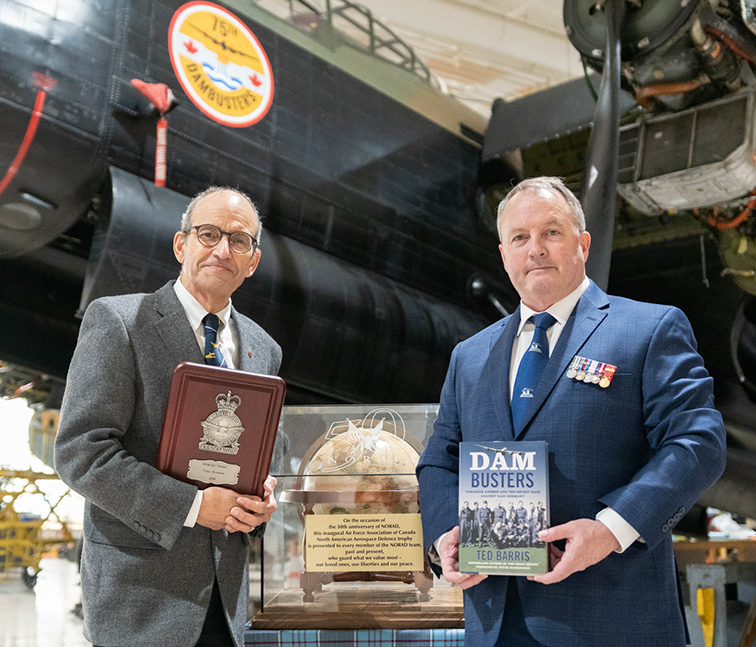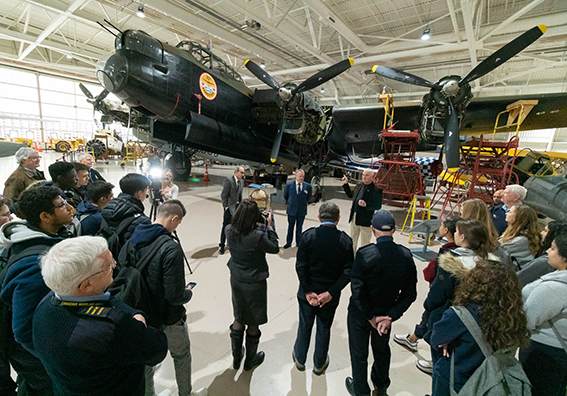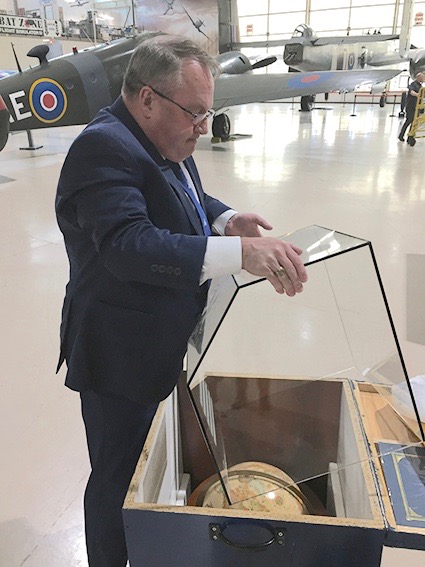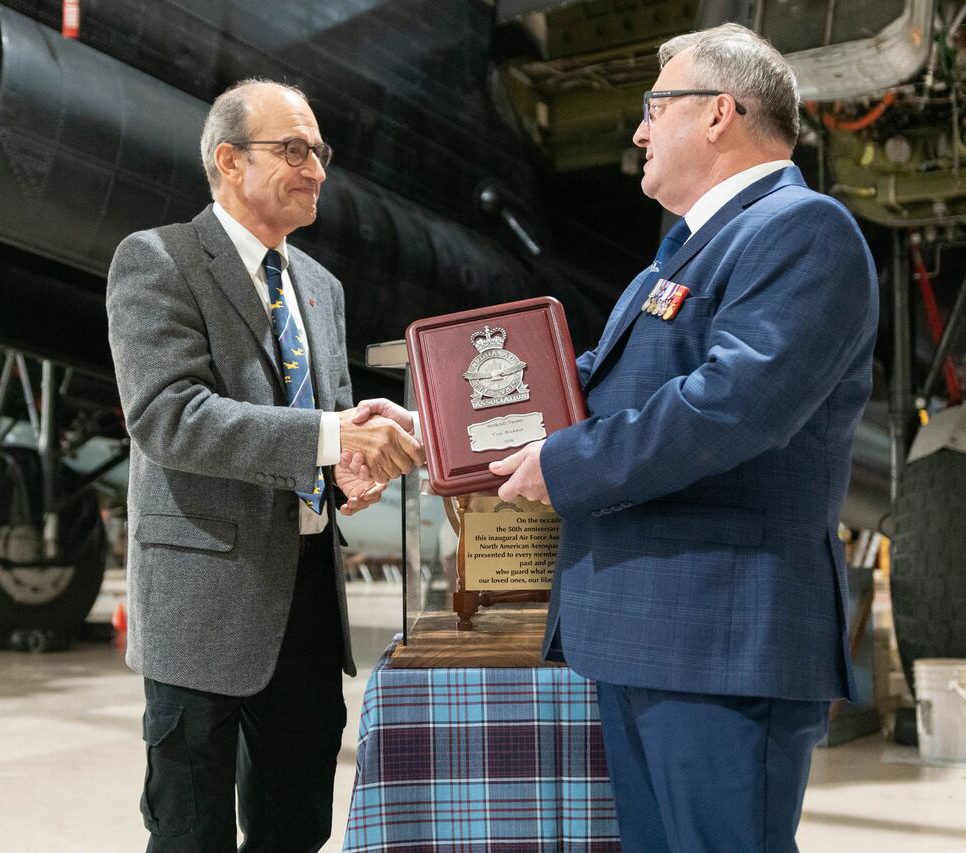
Just as I finished a presentation, last week, my cellphone rang. The readout said, “Air Force.” It’s silly, but almost instinctively I straightened by back and my tie, as if duty were calling. It turned out to be a retired Air Force lieutenant colonel, Dean Black, who’s also the executive director of the Royal Canadian Air Force Association on the line. Not quite the Air Force, but, as it turned out, just as important.
“The RCAF Association has decided to recognize you and your new book with the NORAD Trophy,” Black said.
“I’m flattered,” I said, “but what’s the NORAD Trophy?” I knew that NORAD stood for North American Aerospace Defence Command and that the U.S. and Canada had formed it originally in 1957 when Cold War tensions between the Soviet Union and the West were at their highest, to ensure the protection of North America.
“The trophy used to recognize Air Force crews and stations in the joint defence of North America,” Black said. “But in recent years, it’s been repurposed to recognize individuals such as you for your work in writing Air Force history.”

Then L/Col. Black asked where I wanted to have it presented to me. I suggested the Canadian Warplane Heritage Museum, in Hamilton, where the only airworthy Lancaster bomber in Canada sat in its hangar. The famous airplane that had served in the Dam Busters raid, the subject of my latest book, seemed an appropriate setting.
But there wasn’t time to organize any event, other than a ceremonial unveiling of the trophy in front of the Lanc, still wearing its “Dam Buster 75th Anniversary” nose art. That suited me fine, just a quiet acknowledgment and a brief photo opportunity.

I guess I should have known better. Like all those horror stories about Oscar recipients not preparing their thank-you speeches, I should have anticipated the “ceremonial unveiling.” And on the appointed day, Dec. 6, L/Col. Black met me at the CWHM. He had a wooden box on wheels and an Air Force photographer in-tow. He unlocked the box and slowly revealed the NORAD Trophy, a globe of the world encased in glass. It sure looked impressive.
In fact, so much so that as L/Col. Black unpacked it, the trophy attracted a crowd. On any given day, the museum is busy with its volunteers, scores of former Air Force servicemen and women and the groups of visitors (most often students) they tour around the facility. Suddenly, there was a sizable group gathered around this curious encased globe. A reporter had even shown up from CHCH TV to cover the proceedings. L/Col. Black recognized the opportunity before I did and he addressed the impromptu audience.

“You learn a lot from historians,” Black began. He mentioned some of the country’s foremost authors, Tim Cook, the Great War historian at the Canadian War Museum, and then he included my work. “Narrative is about the country. … And Ted has done important work contributing to Canada’s national narrative.”
He handed me a plaque and certificate, shook my hand, and naturally expected me to speak. The thought, “Unaccustomed as I am to public speaking…” entered my mind, but nobody I know would’ve believed me.
“I’m humbled and honoured,” I said. But when I saw the faces of the young people in the audience, I realized most of what the trophy, the ceremony, and even the wartime content of the museum, must have seemed like ancient Roman history to the 16- and 17-year-old high school students from Oakville standing in front of me.
“How many of you have older brothers and sisters, say 20 or 24 years old?” Many of the teenagers shot their hands in the air. “Could they make responsible decisions?” And they all laughed. Then I quickly followed with, “Could they make life and death decisions?” And I illustrated to the students that all the aircraft, including the 15-ton WWII Lancaster bomber towering over us, had been flown by young men … about the same age as their older brothers and sisters. The penny dropped. I explained that I thought those young aircrews and the men and women supporting them in ground crews, had changed history.
“By coming here today, your teachers and these volunteers have given you a chance to touch our history,” I said. “But it’s up to us to hear the wartime stories about Canadians – people about as young as your older brothers and sisters – and retell those stories as long as we can.”
I think it worked. The youngsters asked the volunteers questions. They crowded around the airplanes. The teaching moment I had grasped at spontaneously had spread. Then, with the ceremonial part of his visit complete, L/Col. Black packed the original NORAD Trophy – like the Stanley Cup – back in its wooden travel box, thanked me again and disappeared into the day.
The event had remained low-key, but indelible for me as a proper way to pay tribute to those whose memory we try to preserve.